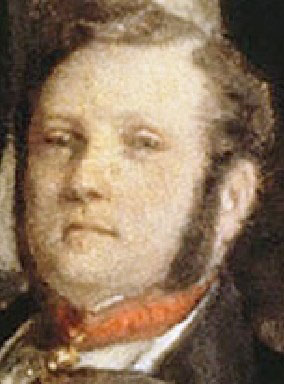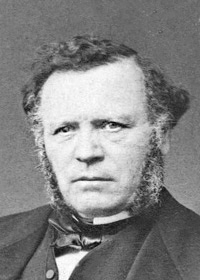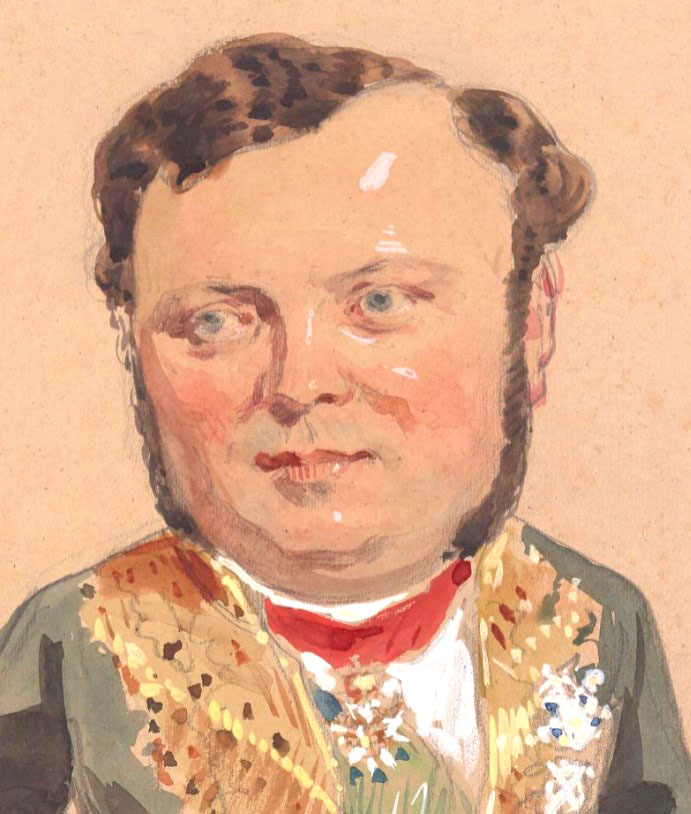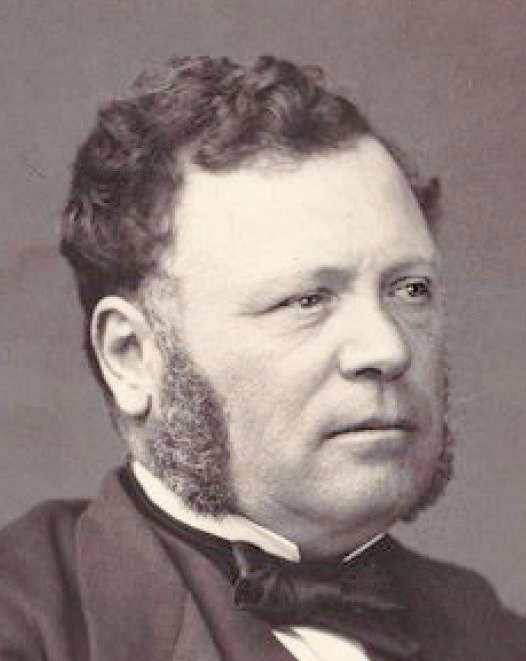Victorin-Ferdinand Barrot (1806-1883), attorney, minister, senator
1st image: Soirée; 2nd: by Pierson (1853); 3rd: caricature by Giraud (Jan. 22, 1858); 4th: Receuil attorney's (1860).
Becoming Commander of the Legion d’Honneur, with its characteristicred neck ribbon (cravate rouge), in December 1852, and senator, in March 1853, were two perfect reasons for Ferdinand Barrot to receive a perpetual invitation for de Nieuwerkerke's16 vendredi-soirées. Viel-Castel43 reports that Giraud11 drew his caricature on 22 January 1858.
It is surprising that he is the only Barrot in the painting. The three brothers: Odilon (1791 – 1873), Adolphe (1801 – 1870) and Ferdinand, the youngest, also referred to as ‘Les trois Barrot’ were equally famous. The Barrot family name already appeared in 14th century documents.
Ferdinand became an attorney, like his oldest brother. Odilon was the renowned orator, authoritative, but also pompous. Adolphe was the ideal diplomat who spent most of his life abroad in over a dozen remote places like China and South America. Ferdinand was the most sympathetic one, steadfast, loyal, and with great wisdom. During his time at the court of cassation in the 1840s, he won more cases than his eldest brother.
Both Ferdinand and Odilon defended Louis-Napoleon’s rebels when they were caught during ill-planned and failed coups from Strasbourg (1836) and (completely drunk) from Boulogne (1840). The president included them in his first government in 1848, not necessarily because of their political experience but because of lack of other trustworthy supporters.
Ferdinand had a brief position as secretary of the president, with responsibility to select candidates for the ministries, and as minister of interior affairs in October 1849. He resigned over administrative quarrels in March 1850, and went to Turin as French ambassador to the kingdom of Sardinia. It was Baroche61 who took his place, with Fould17 on Finance and Rouher on Justice.
Odilon, who also worked for Charles X, did not get along with Louis Napoleon and continued his career as attorney. He did leave extensive memoires, in which he also detailed some of Louis-Napoleon’s many affairs.
After the coup in December 1851, Ferdinand was asked as committee member to draft the new constitution. He became state attorney in 1852, and senator in 1853. Until the dissolvement of the Second Empire, in 1870, he was the formal legal secretary of the senate. All laws and edicts carried his and Napoleon’s signature.
Chaix d’ Estange06 replaced him as secretary of state in 1867.
Brothers
Ferdinand and Odilon were close. Odilon’s only child Marie tragically died at the age of 18, in 1844. Her place was taken by Ferdinand’s son Raymond, who was raised by Odilon from the age of six months. He cared for Odilon at the time of his death in 1873. He became Barrot-Bey when he moved to Egypt as secretary of the viceroy.
Ferdinand’s youngest of three daughters, Gabrielle (1845 -1921), was adopted by Odilon and inherited his house at Bougival. With both her father and uncle in the senate, the pretty blonde Gabrielle sometimes attended the session from the royal tribune with her friends. Newspaper Liberté noted in 1870 that this caused both de Nieuwerkerke and Rouher to frequently lift their lorgnettes to eye the girls.
A series of kidney stone attacks led to Ferdinand’s death in 1883.



